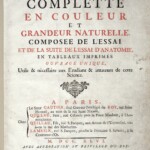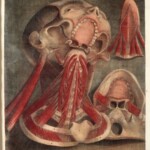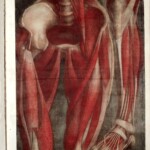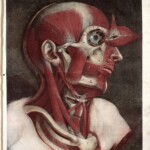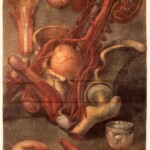Photos: Wellcome Collection
One of the most famous eighteenth-century anatomical atlases, which was created with the participation of the graphic artist and anatomist Jacques Fabien Gautier d’Agoty (1716-1785). The main task of this work was to facilitate the study of anatomy for students of medicine, surgery, painting and sculpture. In the creation of this work and other anatomical atlases, Gautier d’Agoty collaborated with Jacques Francois Duverney, a Parisian surgeon and anatomy demonstrator at the Jardin du Roy. As far as the medical value of the content of the atlas is concerned, it was small in the eyes of specialists and has added nothing significant to science since the time of Vesalius. On the other hand, the illustrations that complemented it were extremely valuable. They were made using the mezzotint method, which Gautier d’Agoty learned from his master Jacob Christoph Le Blon, enriching them later with the addition of black. The anatomical pictures from Myologie complette aroused much controversy in the 18th century. They were attributed to sublime drama, artistic arrogance, and sometimes even an insult to Christian morality. The realistic close-ups of female and male genitals depicted next to each other were particularly controversial. In some cases, they were read as disguised personal erotic fantasies of the artist. It seems, however, that in this way he rather wanted to draw the attention of influential personalities to his works, which could have positively influenced the expansion of his printing activities. Today, due to the characteristic style and extremely original compositions, Gautier d’Agoty is considered to be the progenitor of surrealism.


